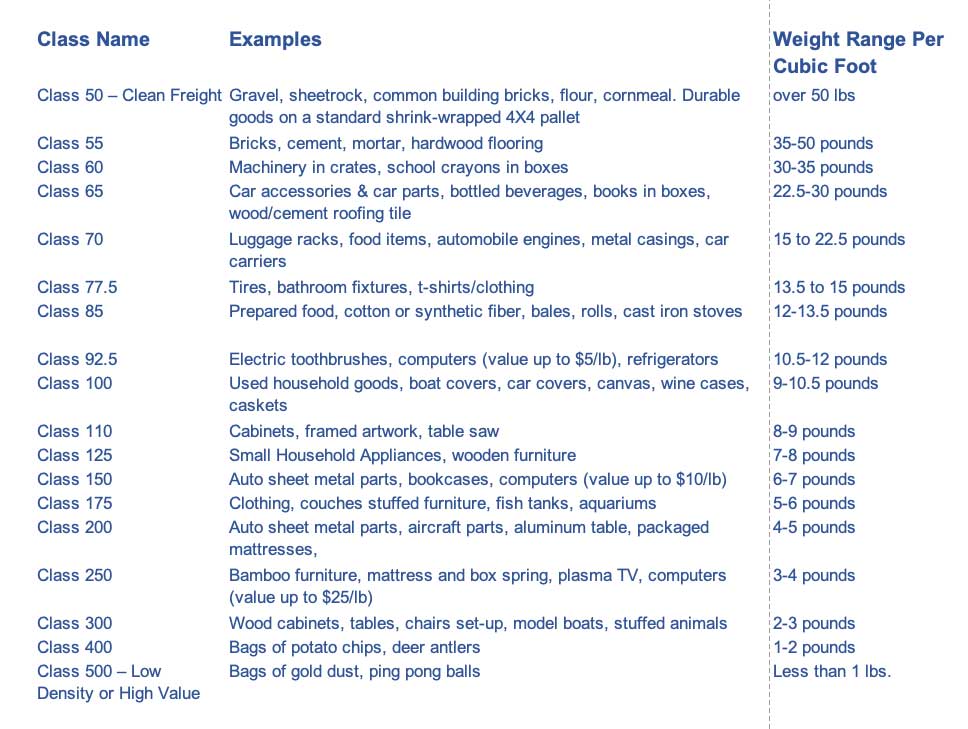Your products need to be shipped – but at what cost? To find the answer, you’ll need some good information to start with, and help from an industry professional.
In order to understand your business’ shipping costs, and avoid eroding your profit margins, you’ll first need to know what shipping class or classes your products fall into.
The next step is to find out who you can partner with to do the heavy lifting. Professionals you can trust to provide the service you deserve and ship your goods cost-effectively.
Navigating the Uneven Sea of Trucking Rate Estimates
Unfortunately for manufacturers seeking standardized pricing, there is no single monopoly in the freight industry. While some exceptionally large branded carriers try to stifle competition to become a one-stop-shop for freighting, the shipping industry remains very diverse.
This may be due to the very regional nature of shipping. Certain companies are geared towards servicing small areas and are therefor capable of managing them meticulously.
The diversity in freight service may also be the result of the infrastructure that has evolved within the industry. Historically speaking, there was no one single ‘railway’ that made more sense than all the rest.
Today we’re left with a multilayered, multifaceted industry that can’t really answer the ‘how to estimate freight shipping costs’ question with one harmonized explanation.
While there are some consistencies that different freight providers adhere to, what you wind up estimating for your shipping costs may be subject to significant changes. This is due to broker recommendations, what a carrier may offer you, what a 3PL provider may quote you, and so on, through the various levels and types of freight services.
Still, you need a place to start, which leads many businesses inclined to ask: is there at least some kind of standard pricing system?
Start With Standardized Freight Classes
What does freight class mean?
Founded in 1956, the National Motor Freight Traffic Association (NMFTA) created a list of 18 different freight classes which serve as categories for different types of shipments.
This system is now is one of the few facets of the industry we can confidently say has been standardized. Not only are the classifications regarded as law, but they’re used as reference points for every cog in the machine.
No matter what region of the industry you’re working in, these defined classes are going to to dictate the pricing estimates for each type of shipment.
Along with these 18 different freight classes,
There also exists categories for different types of hazardous material, and a further taxonomy for cargos that are shipped LTL (less than truckload). That being said, these additional classes are somewhat rare and not often integrated.
Most importantly for the purposes of this article, every freight shipping contract must have a freight classification declaration. Hence, you have a starting point.
Freight Class Examples
How Does Freight Class Help Me Estimate My Shipping Costs?
The freight classifications set forth by the NMFTA work to negate randomness and thus promote consistent pricing across the industry.
By categorizing broad types of cargo together, it provides a shipper, carrier, or anyone between them with an idea of how much it’s going to cost to ship the materials. It also gives an idea of the degree of difficulty required to execute the shipment.
In practice, an experienced professional will recognize that a shipment in the 50 class is going to be an inexpensive cargo like sand that fits perfectly onto a pallet. Likewise, with a freight class of 500 then the same individual will know it’s a material similar to ping pong balls and, though not nearly as heavy, be comparatively expensive to transport.
You can reason then, by knowing which class or freight classes and the details of the specific categories your products fit into, you’re one step closer to estimating the ‘general expense’ of your specific cargo.
The next question is then, how do you determine your freight classification?
Calculating a Freight Classification
Calculating the freight class of a product depends on: physicality, storability, handling, and liability.
In particular, the physicality of a product has one deciding factor that is a combination of height, width, depth, and weight measurements – and that is density.
Density is the primary key in determining any product’s freight class.
Using a combination of the above factors, a shipper can then calculate a freight class, which helps estimate their freight shipping cost. Or at the very least provide a general idea of how it’s placed within the industry.
That being said, it is advisable to have a professional assist in the calculation process. One small error can mean the difference in overpaying or paying more later.
Create a Regional Freight Grid Estimate
With the freight classification identified, you can then move forward by creating a regional grid estimate.
Although time-consuming, the result can produce an above average shipping estimate. the methodology is to research local or regional shipping solutions to gain an understanding of their prices and schedules.
The drawback is that it’s virtually impossible to calculate all the fees, extra charges and changing regulations with these ‘overt estimates’ .
Shipping Costs and Location
Location is unanimously going affect the price across the entire industry. It’s simply common sense that the further the freight has to go, the more expensive it’s going to be.
Using a Freight Broker Makes Calculating Shipping Costs Easier
Keep in mind, your time is valuable, not everything in shipping needs to be DIY to move your company forward. Considering the complex nature of the shipping landscape, hiring an industry guide makes your job that much easier.
From broker, forward, to third-party logistics company, a qualified professional should be able to evaluate your freight properly, assign the right freight class, and generate accurate shipping estimates.
These liaisons exist for this very reason; to provide accurate information to both parties and create healthy relationships between shipper and carrier.
There are plenty of ways to estimate your freight shipping costs but these liaisons exist for this very reason. They provide accurate information to both parties, create and maintain healthy relationships between shipper and carrier
Estimating Shipping Costs Efficiently
Calculating freight shipping costs and estimates using freight rates and common shipping rates can definitely be a challenge. But it is totally do-able.
Using the methods above will help provide at least a ballpark understanding of pricing, and engaging professionals can accurately generate estimates that can help you save on shipping costs.


